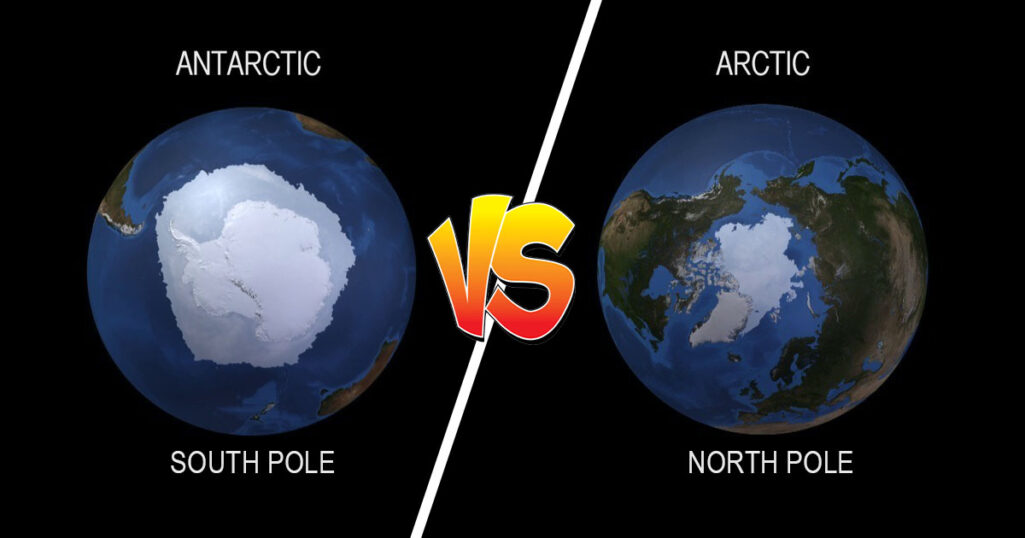
Arctic (North Pole) and Antarctic (South Pole) are separated by a remarkable 20,000 Km (12,500 miles), making them the two “ends of the world” on the planet. Even though these parts of the North and South Poles look the same, they offer visitors a variety of natural wonders that are very distinct from one another.
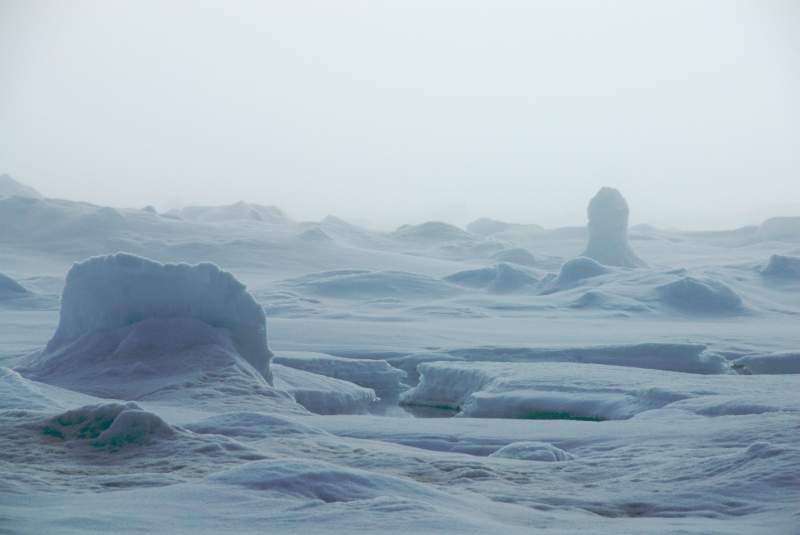
Cold, snowy and untamed are the common characteristics for the extremities of our globe. The Arctic and Antarctic areas are very extraordinary if you can bear with the freezing cold temperatures.
From their diverse species to their breathtakingly rough terrain, each pole is jam-packed with exciting opportunities for exploration. Let’s find how different these poles are even though they look very similar.
Composition
Assuming you were standing at each pole and looking out across a vast area of white snow and ice, the perspective would be nearly identical, with few or no distinguishing characteristics to break up the picture. But in reality, the two landscapes are considerably distinct in composition.
The North Pole
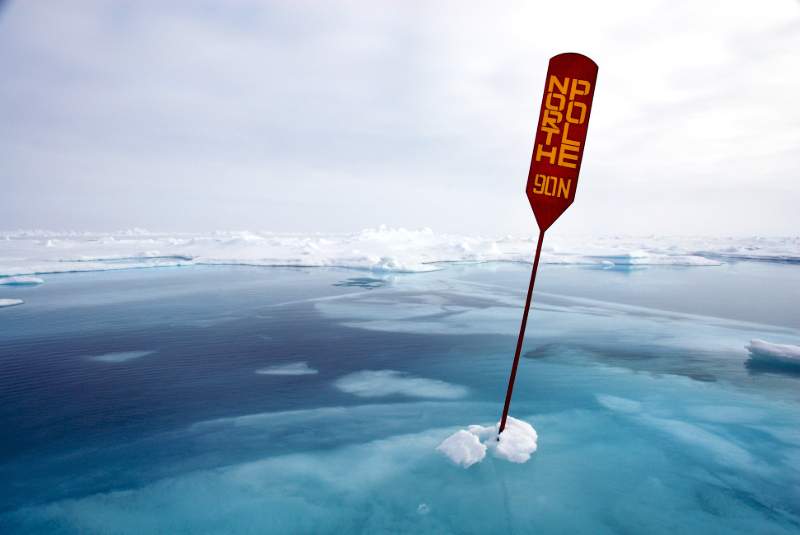
In the Arctic Ocean, the ice you’re standing on is between 1 and 3 meters (3-10 feet) thick and floats over seawater that has been frozen. The sea level is normally little more than 1 meter below your feet.
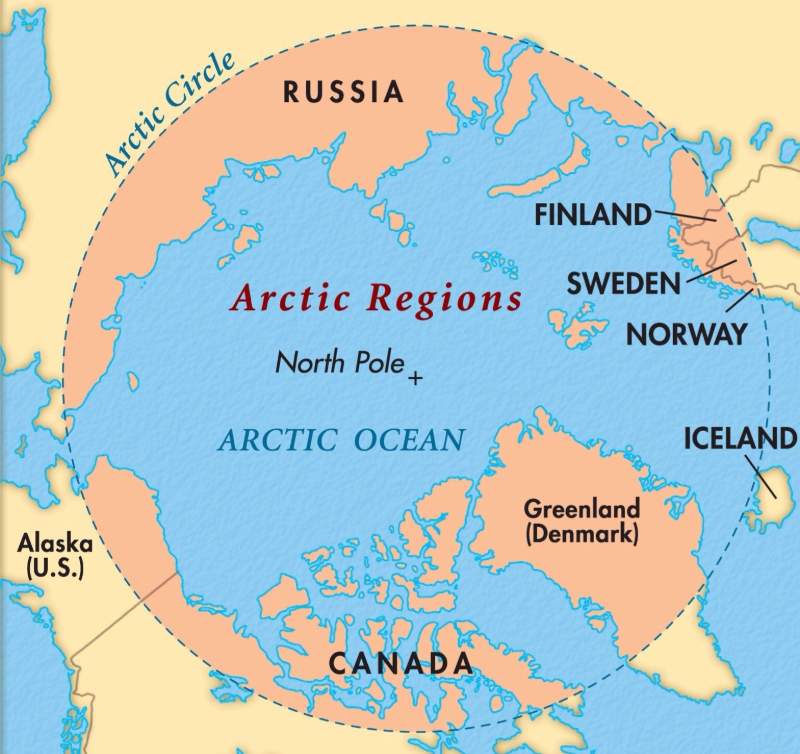
The North Pole is around 730 kilometers (450 miles) from the nearest land at Greenland’s northernmost tip.
It is impossible to accurately monitor temperatures in this area since there are no buildings or populations on the sea ice, and it is too unpredictable and unstable.

In reality, there is no such thing as a geographic North Pole. The Arctic is a large, open ocean that is encircled by land and covered by ice.
The South Pole
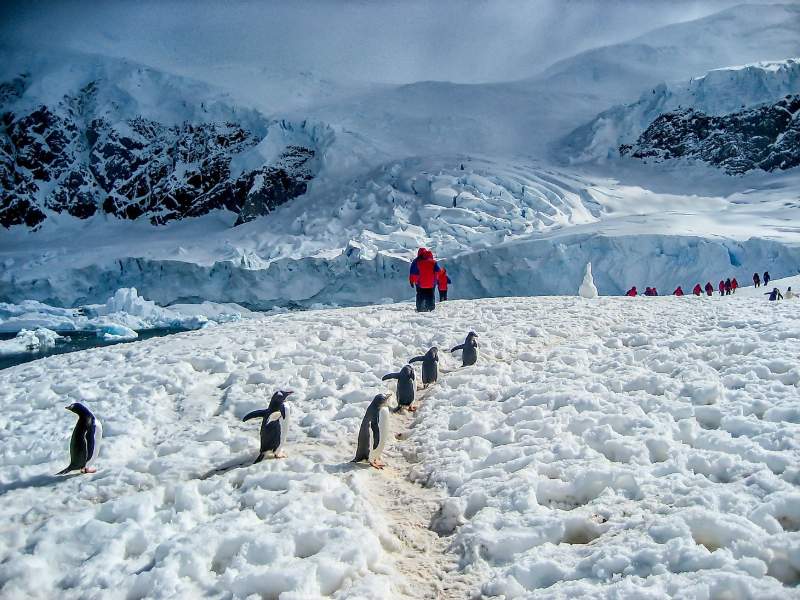
Standing over a block of ice that is 2,700m (9,000ft) thick, you are at an elevation of 2,835m (9,300ft). The ice extends down to rock that stands just over 100m above sea level, which is being forced into the Earth’s mantle by its own weight.
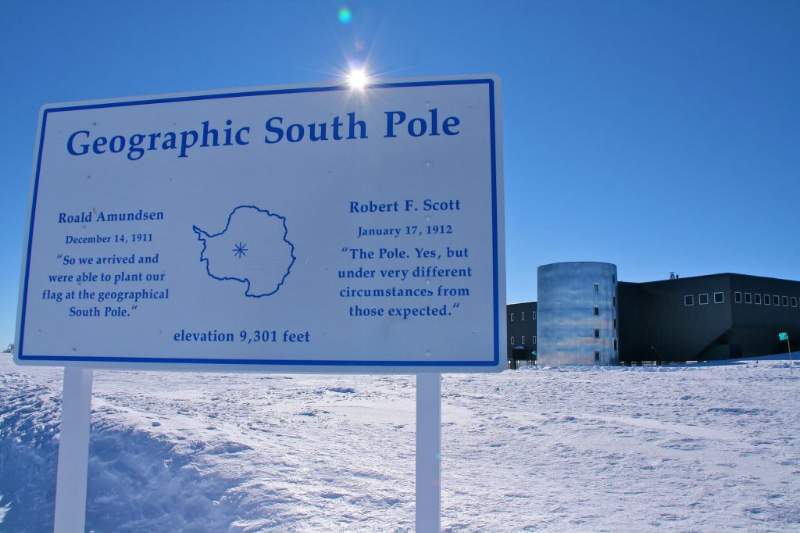
The ice is moving westward into the Weddell Sea at a rate of roughly 10 meters per year (33 feet), and the nearest ocean to the south pole is 1,300 kilometers (800 miles) away; it is the Bay of Whales.
Since 1956, a huge research station at the South Pole has been recording temperature readings.
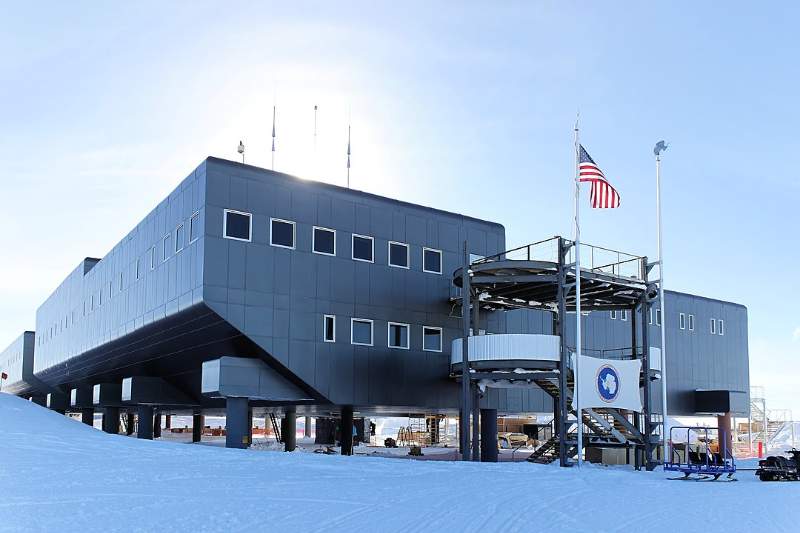
Antarctica is a continent surrounded by sea ice and the Southern Ocean, with a thick ice sheet covering the whole surface of the continent.
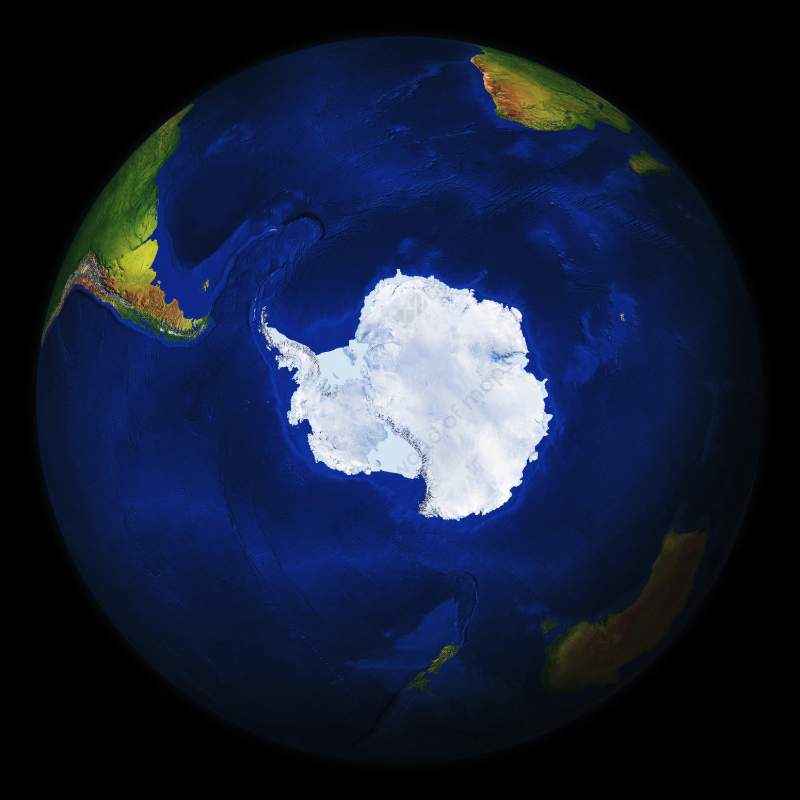
Day and Night
From the March equinox until the September equinox, the sun is always above the horizon at the north pole, reaching a high point of 23.5° around June 21st of each year. It never rises over the horizon from September through March.
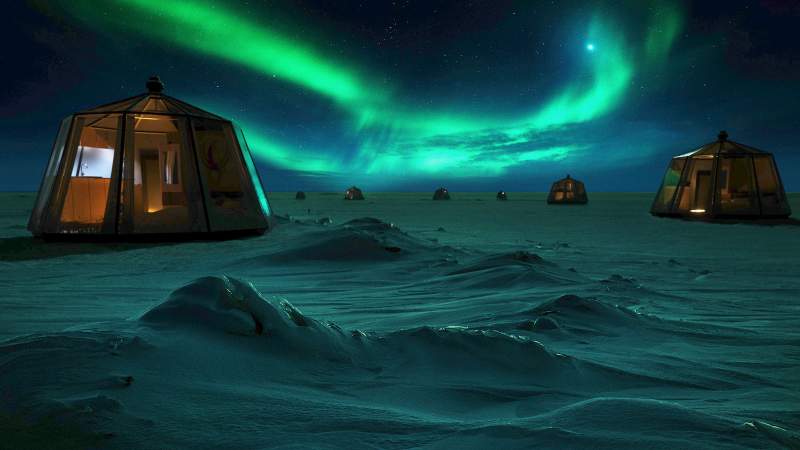
On the other hand, the sun is at its peak at the South Pole on December 21st, which is summertime to the North Pole’s winter.
To make things clear: there are five months of daylight at the poles, followed by a month of twilight, followed by five months of darkness, and so on.
Wildlife and Nature
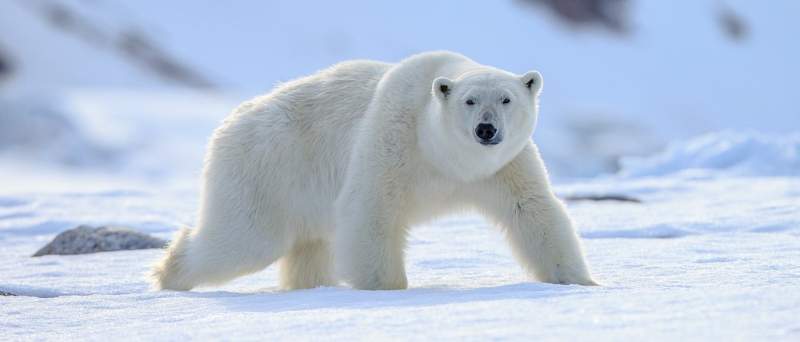
A wide variety of landforms may be found in the Arctic, such as plains, mountains, rivers, lakes, and vast areas of tundra and the edge of the world’s biggest ecosystem, the taiga.
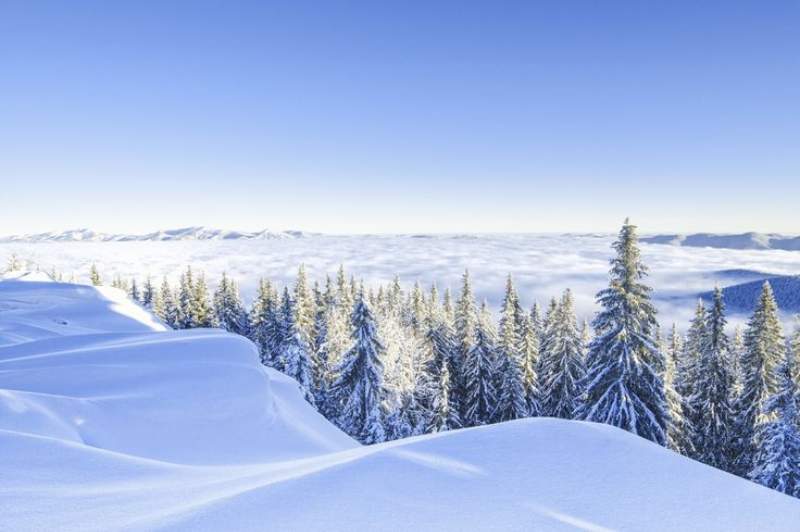
This frozen sea and neighboring landmasses are responsible for the ice in the Arctic Ocean. It has a lot of 3 to 4 meter-thick (10 to 13 foot-thick) multi-year sea ice, with some considerably thicker ridges. Greenland has the second-largest ice cover in the world after Antarctica, yet this permanent ice is extremely uncommon and tiny in area.
Even in the summer, the vast majority of the Arctic’s ice is solid sea ice, which forms as the Greenland ice sheet approaches the ocean’s edge.
The vast majority of Antarctica is covered in ice, which means that the terrain is dominated by snowy mountains, glaciers, or a smooth ice sheet. There are no big rivers or lakes that run year-round, minimal land vegetation, and no grass, bushes, or trees.
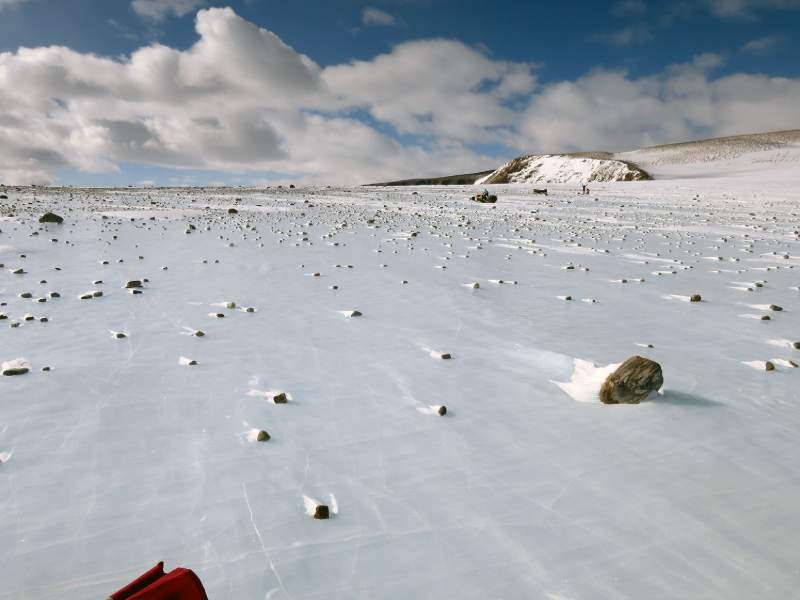
The Antarctic Peninsula has a few tiny sections of tundra, while several of the Antarctic and sub-Antarctic islands have greater areas.
The amount of Antarctica’s surface area doubles each winter due to the formation of sea ice along the coastlines, which breaks up and moves north in the summer, primarily melting as it does so. A large portion of the Antarctic seas, especially during the summer months, is composed of ice from glaciers and ice sheets.
Plants
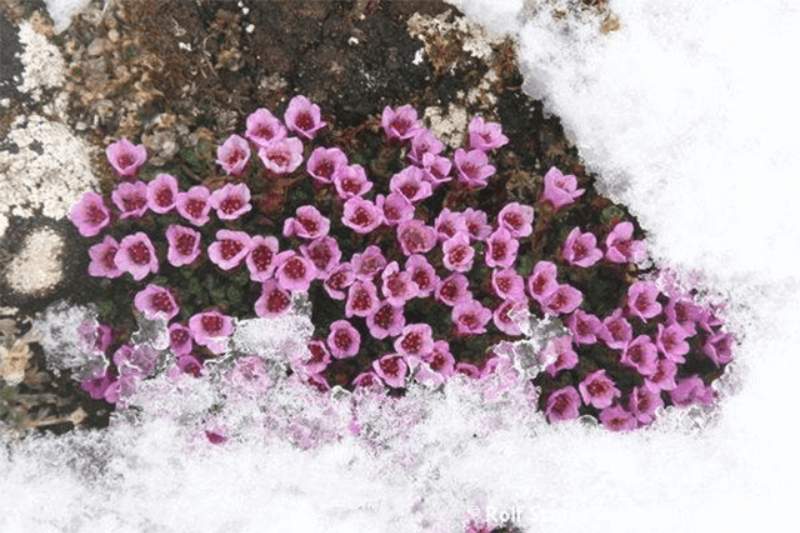
Plant life in the Arctic is dominated by what grows on the tundra, a huge low-growing treeless region of around 11.5 million km2. Low shrubs, sedges, grasses, mosses, and liverworts, as well as a large range of alpine-type blooming plants and numerous lichens, may be found throughout the area. The tundra is home to more than 1,700 types of plants.
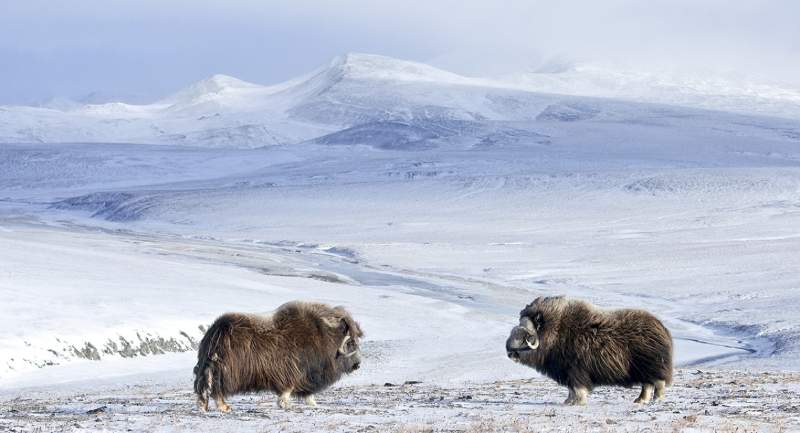
Many big herbivores, such as reindeer, musk ox, lemmings, arctic hares, and squirrels, may thrive in the tundra. Tundra plant cover can range from 80 to 100 percent near the southern tip of the arctic, whereas farther north, it can be 0 or only a few hardy alpines.
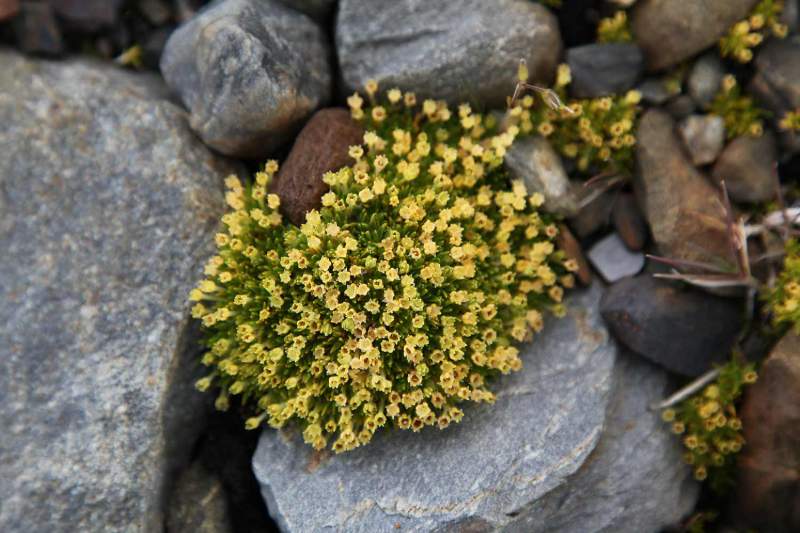
On the other hand, the Antarctic is home to a far smaller variety of plants. Only around 1% of the continent is ice-free, mainly along the Antarctic Peninsula and on islands; however, there are some exposed rocks inland known as nunataks where the hardiest of plants may grow themselves.
Two kinds of plants, grass and a little flowering alpine, are all that are found, along with roughly 100 types of moss, 300-400 species of lichens, and 25 species of liverworts.
Animals
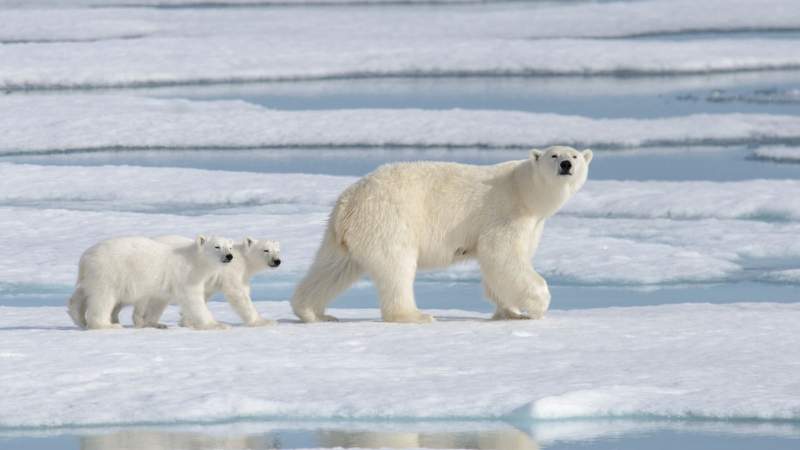
Reindeer, musk oxen, lemmings, polar bears, and arctic hare are some of the major terrestrial creatures found in the Arctic, as well as arctic birds like the snowy owl and snowy tern. Animals can migrate south in the winter and return north in the summer months.
In sum, there are many of these creatures due to the vastness of the Arctic. Predators have to cover a big area to be able to feed themselves in the long run because the land isn’t particularly productive.
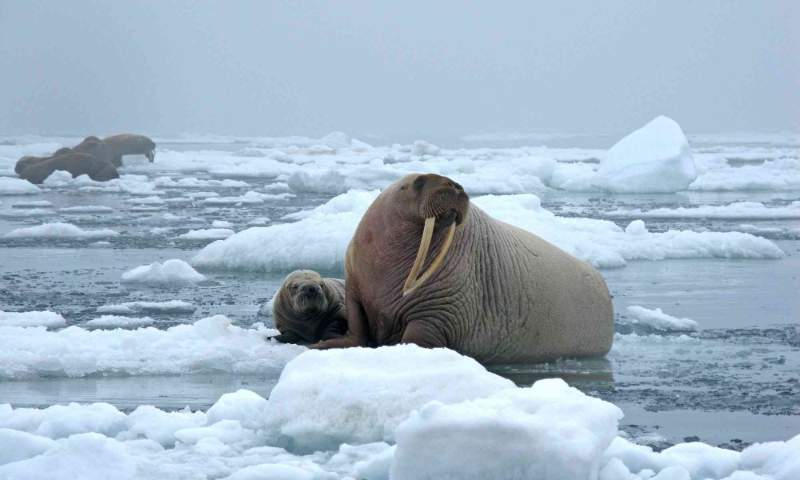
Walruses and seals of many sorts, including bearded, harp, ringed, spotted, and hooded, are further examples of huge marine mammals found in the Arctic.
The smallest land animal found in Antarctica is a wingless midge insect, called the Belgica Antarctica, which is less than 1.3cm (0.5in) long. Because they’d be blown away, there are no flying insects.
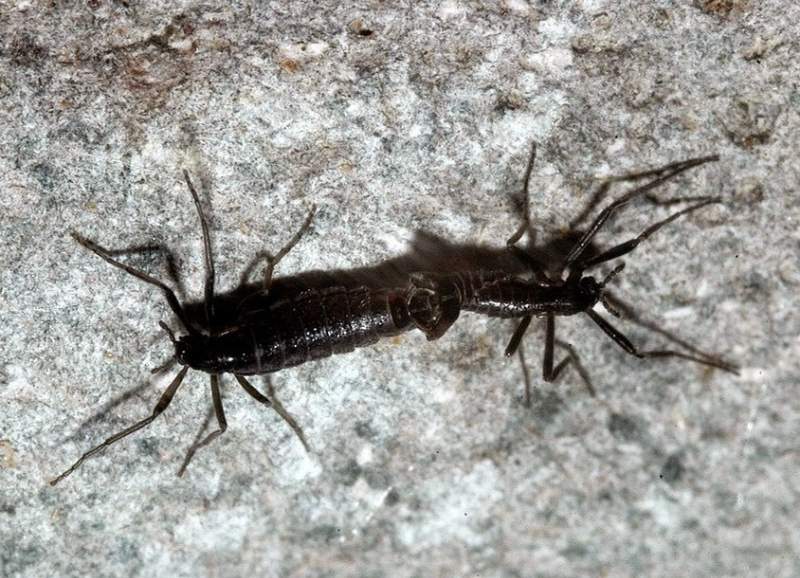
A large number of penguins, such as Adelie, Chinstrap, Gentoo, King, Emperor, Rockhopper, and Macaroni, come ashore for most or all of their lives to feed on the sea’s resources.
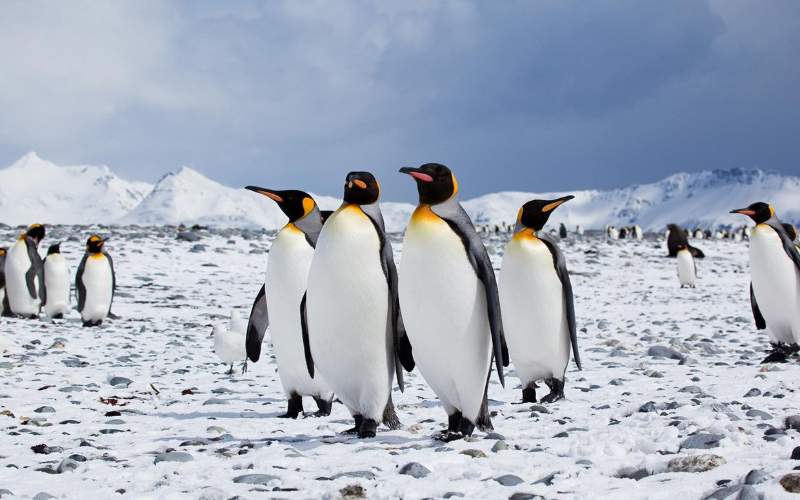
Fur, leopard, Weddell, elephant, crabeater seals, and many other kinds of birds such as albatrosses and assorted petrels could be found in Antarctica. In certain parts of Antarctica, the wildlife has grown to impressive numbers, thanks in part to the absence of human hunting.
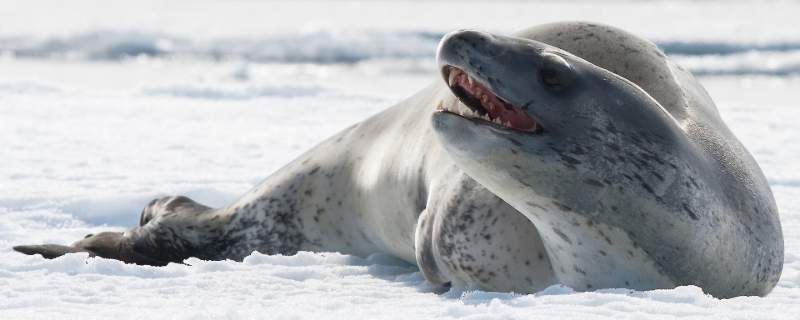
Human Presence
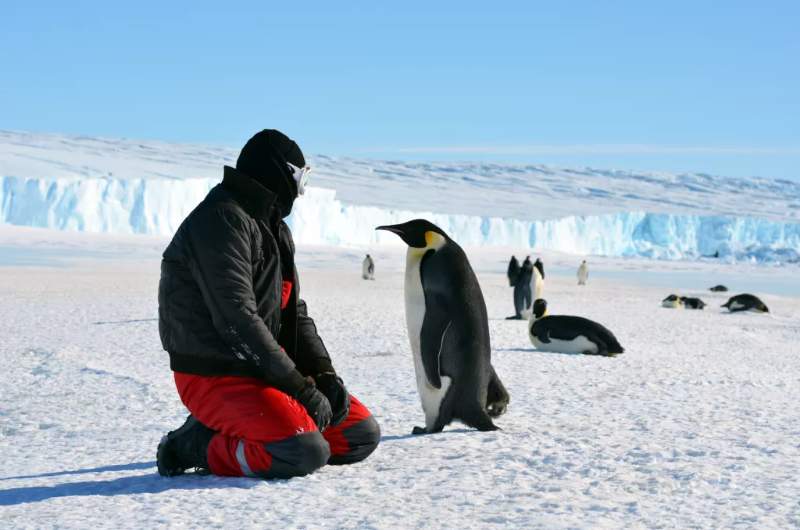
The Arctic (North Pole)
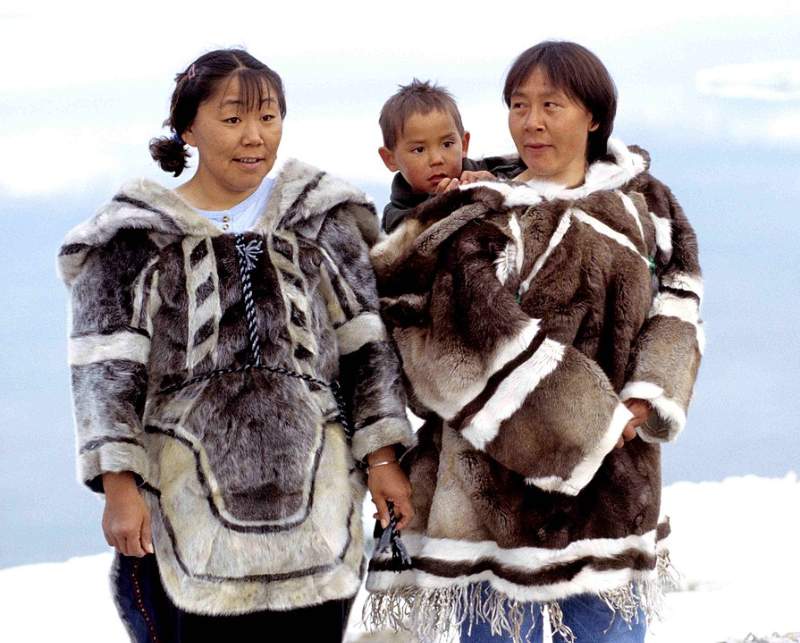
The Arctic is home to a large number of native people. Inuits, Chukchis, Sami, Yupiks, and Inupiats all live there. One of the most notable contrasts between the two poles is humanity’s presence.
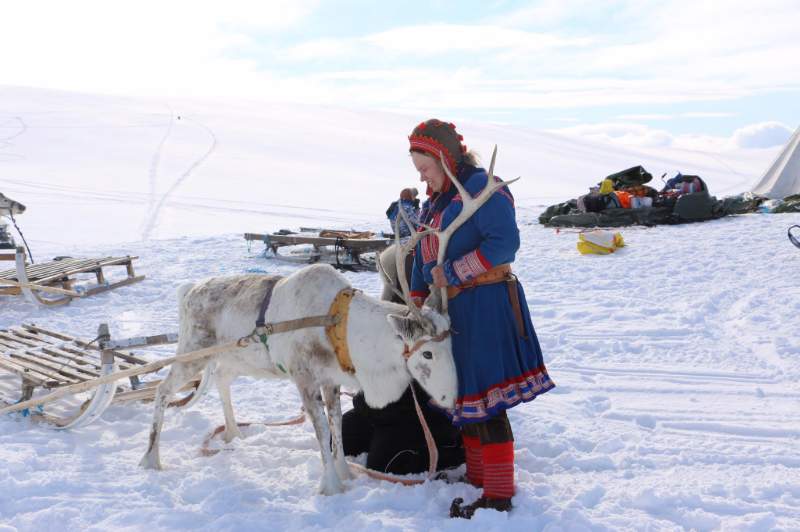
While most northerners are nomadic and hunter/gatherers, the Sami people of Scandinavia and other parts of Scandinavia are reindeer herders, making them an exception.
People have been living in the Arctic for several thousand years because of easy overland access from the south. This has had a profound impact on the region.
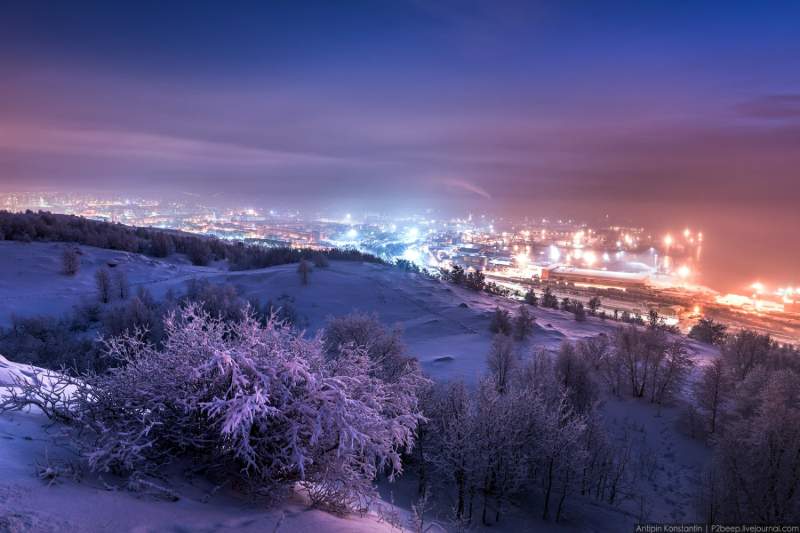
The biggest city in the Arctic, Murmansk, has a population of 325,100. The total population of the north pole is around 4 million people that live there permanently.
The Antarctic (South Pole)
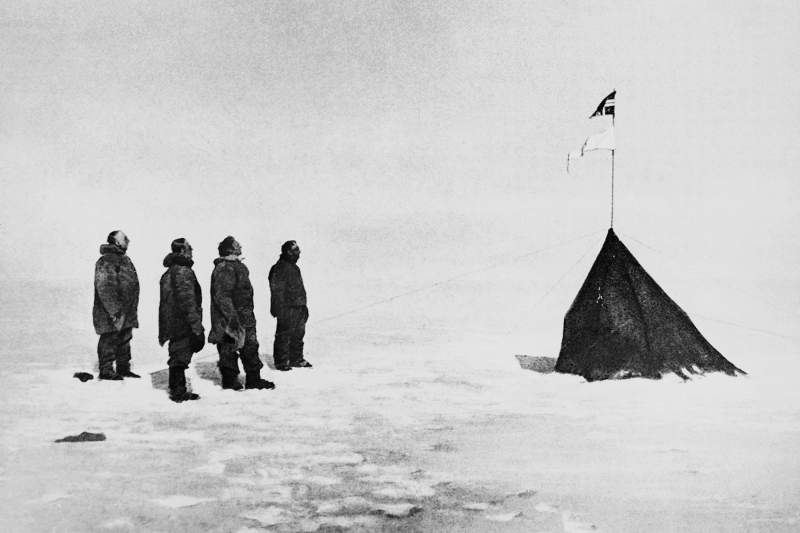
No native communities have ever lived in Antarctica. Before 1820, no one had ever seen Antarctica, and it wasn’t until 1898 that the first Europeans spent a whole year there after setting foot on the continent.
Since the early days, Antarctica has only ever been inhabited by research stations and their workers, who only stay for a few months at a time. There are still no true natives of Antarctica who have lived there their entire lives and will continue to do so in the future.
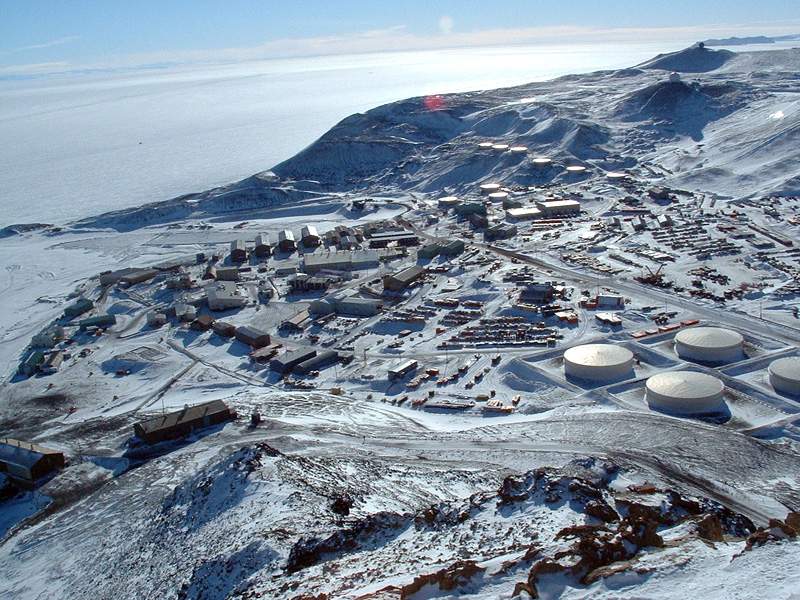
The American base at McMurdo has the most residents, with up to 1,000 during the summer and only 250 during the winter. For 6 to 14 days each summer, ships bring 30-40k people to the continent.
Zero permanent population lives in the continent. The number increases in summer up to 45,000 and decreases in winter to a maximum of 1,000 people.
Climate Conditions
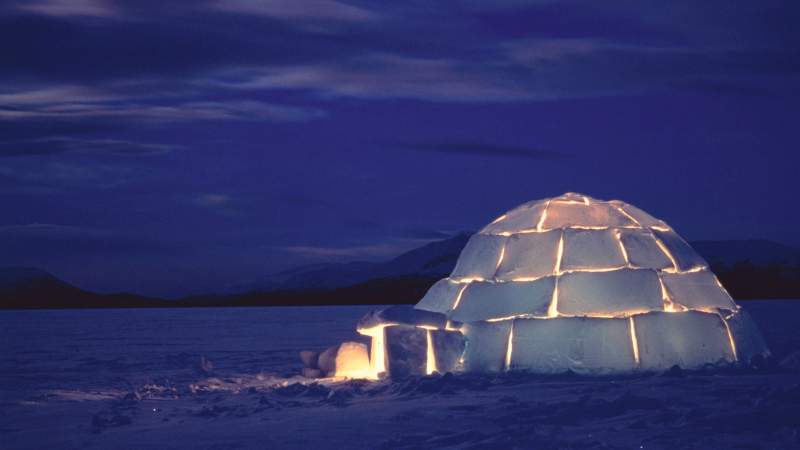
Polar locations have long, freezing winters and short, cool summers (or at least less freezing than the winter). However, there is a spring and fall, although you can miss them if you’re blinking too fast. One season is cold and bright, whereas the other is colder and dark.
The northern polar area and coastal regions are maintained reasonably warm even if they are covered by ice. This is due to the sea’s temperature, which does not go below -2°C.
However, at an average height of 2,300 meters (7,546 feet or 1.4 miles), making Antarctica the highest of all the continents, more than twice as high as Asia. And as we know, the temperature decrease by around 1°C every 100 meters of height. Imagine how freezing cold this part of the world is!
Additionally, the weather in Antarctica tends to stay within the continent, whereas Arctic weather flows out to the south. This will keep Antarctica colder than its Arctic neighbor since it doesn’t exchange weather with other places.
As the poles are so large and varied in temperature, it is impossible to put a number on how low each one is. However, we could provide a range of temperatures and the highest/lowest temperatures ever recorded there.
Temperature range recorded in January:
- North Pole: Temperature ranges from -43°C to -26°C (-45°F to -15°F).
- South Pole: Temperature ranges from -62°C to -55°C (-80°F to -67°F).
Highest temperature recorded at the poles:
- North Pole: Highest temperature is +5°C (+41°F).
- South Pole: Highest temperature is -13.5°C (+7.7°F).
On July 21st, 1983, the Russian station near the Southern Geomagnetic Pole in Antarctica reported the lowest temperature ever recorded on Earth: -89.2°C (-128.6°F).
Conclusion
The North Pole and the South Pole look very similar, but we have already shown in this article how different they are in reality. However, these are still some of the differences between the North and the South Poles that we discovered, but who said that’s all?
What more information do you have that we haven’t already stated? Please consider sharing your thoughts and information with us!
No comments:
Post a Comment